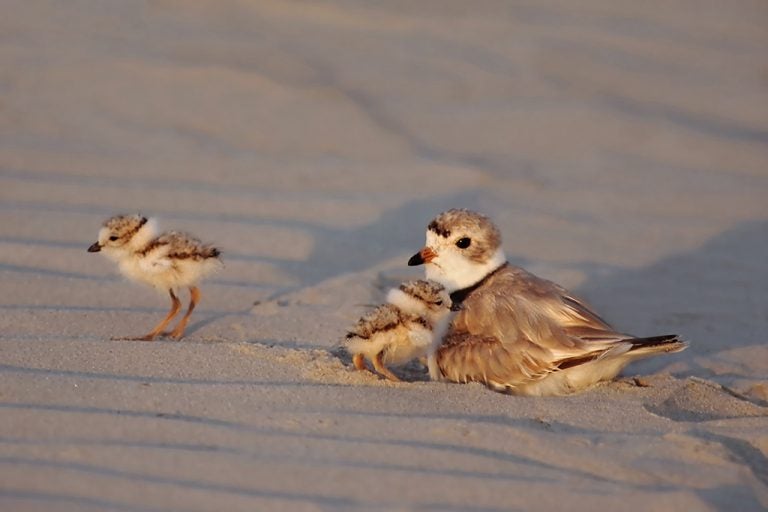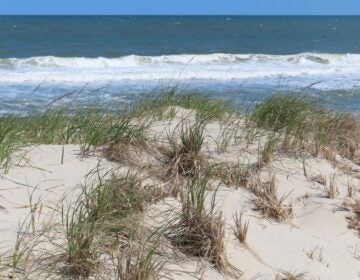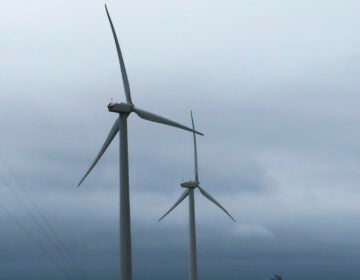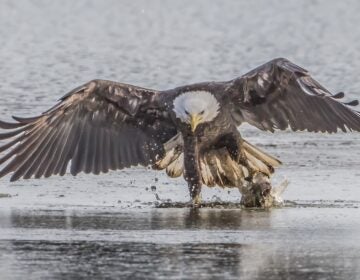N.J.’s endangered piping plover population increased in 2019, but researchers are cautiously optimistic
N.J.'s piping plovers population increased by 19% in 2019, but researchers are cautiously optimistic about the threatened and endangered shorebird's long term prospects.

Piping plover with chicks in Cape May, N.J. (Courtesy of Kevin Karlson)
N.J.’s piping plovers population increased in 2019, but researchers are cautiously optimistic about the threatened and endangered shorebird’s long term prospects.
Highlights from Conserve Wildlife Foundation of New Jersey’s 2019 piping plover report, which provides the number of nesting pairs, active nests, and nest productivity throughout New Jersey, include 27 sites where pairs nested, up significantly from just 19 sites in 2018.
114 pairs of piping plovers nested in New Jersey in 2019, a 19% increase from 2018, which logged 96 pairs — the third lowest since 1986, according to the report.
Researchers say the 2019 population is slightly below the long-term average of 117 pairs and significantly less than the peak of 144 pairs in 2003.
But productivity — the measurement of the amount of young birds that fly, or fledgling, per pair — dropped considerably from 1.51 in 2018 and 1.24 in 2019 and was the lowest level in the last six years, the researchers found. Still, productivity is well above the long-term average since 1986.
In line with previous years, researchers additionally discovered that nearly three-quarters of the state’s piping plover population was in federal parks (Gateway National Recreation Area’s Sandy Hook Unit and E.B. Forsythe National Wildlife Refuge’s Holgate and Little Beach Units) in 2019.
“The importance of these federal lands in New Jersey is paramount. They provide the state’s premier nesting and foraging habitats, and recreational use can be better managed than elsewhere in New Jersey,” the team noted, adding that habitat outside of federal areas is not suitable due to human disturbance, stabilization efforts, and beach grooming.
The researchers encourage managers of municipal and state beaches to mimic natural conditions as much as possible to encourage more piping plover nesting.
In 2019, state officials restricted beach buggy traffic in a portion of Island Beach State Park due to nesting piping plovers. Piping plovers have nested in Island Beach State Park over recent summers, beginning in 2016.
Before that, they were last spotted in the state park in 1989. Conserve Wildlife Foundation of New Jersey biologists speculate that Superstorm Sandy’s creation of more open habitat was probably responsible for the piping plover return to Island Beach State Park.
WHYY is your source for fact-based, in-depth journalism and information. As a nonprofit organization, we rely on financial support from readers like you. Please give today.




